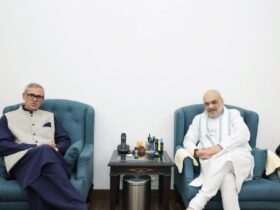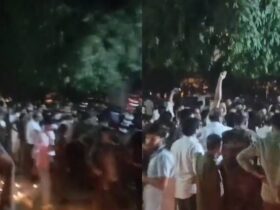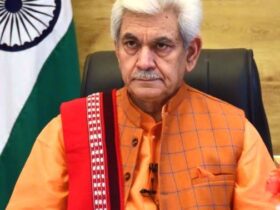Mumbai: Alleging that “evidence had been manufactured to falsely implicate him” in the 2002 hit-and-run case, Bollywood actor Salman Khan told the trial court that there were circumstances to show that he was not driving the car which rammed into a shop killing one person and injuring four.
His lawyer Srikant Shivade told Judge D W Deshpande that it was Ashok Singh and not Mr Khan, who was driving the Toyota Land Cruiser SUV at the relevant time and this had been brought out in the examination of this defence witness.
“Merely because Salman Khan got down from the driver’s side does not mean that he was driving. We have explained this in cross-examination (of defence witness) and also in the statement of the accused (Mr Khan),” said his lawyer Srikant Shivade who commenced final arguments on April 10.
There is no evidence on record to show that Mr Khan was driving the car. All that has emerged in the examination of witnesses is that he got down from the right hand side of the car. This is because the left door got jammed in the impact of the mishap and did not open, Mr Khan’s lawyer said.
There is no reason why Mr Khan’s statement in the court and Mr Singh’s testimony should not be accepted, he argued while picking holes in the prosecution’s case.
“The defence taken by the accused that he was not driving and Ashok Singh was behind the wheel was not an “afterthought” as claimed by the prosecution. The only access for a person sitting on the front left side was to get down from the right side as the left door was jammed and did not open. There was no other choice and that is what Salman did,” Mr Shivade argued.
Referring to prosecution’s charge that Mr Khan was driving at a speed of 90 to 100 km per hour, his lawyer said this was not possible. The distance between J W Marriot hotel (where the actor had gone with a friend and brother) and the mishap spot was 7 to 8 kms, while the time taken by his car to cover this distance was between 2.15 am to 2.45 am.
“It is not possible for the driver to cover such a short distance in 30 minutes, more so, at night when the roads are empty. The time taken to cover this distance indicates that the speed could not have been more than 90 kms per hour,” the defence lawyer said.
Arguing before Judge D W Deshpande, Mr Khan’s lawyer referred to evidence of three witnesses – Rain Bar Manager, Mr Khan’s police bodyguard Ravindra Patil and dairy-owner Ramshrey Pandey – who said there were four persons in the car, though prosecution has claimed there were three persons.
Besides Mr Khan, his police bodyguard Ravindra Patil and singer friend Kamal Khan, the fourth person was Ashok Singh, Mr Khan’s driver, who was driving the car at the relevant time”, said Mr Shivade.
However, the police suppressed this evidence and have not mentioned Ashok Singh in the First Information Report, said the defence lawyer.
Mr Shivade argued that the supplementary statement of the eye witness Ravindra Patil, who died during the earlier trial, was recorded on October 1, 2002, in the absence of the accused (Mr Khan).
Although he was the first prosecution witness, PW-1, his statement was recorded at the far end. Thus Mr Khan was denied an opportunity to cross examine other witnesses regarding Mr Patil’s evidence, he argued.
“Thus, there was an ulterior motive to cause prejudice to the accused and put him at an disadvantage,” Mr Shivade alleged.
He said Mr Patil’s statement recorded in the earlier trial before a Magistrate should not be used in this fresh trial because the aggravated charge of ‘culpable homicide not amounting to murder’ was added.
Issues involved in both the trials are substantially not the same in view of the aggravated charge of culpable homicide which attracts punishment up to 10 years. The earlier charge of rash and negligent driving prescribes two years jail, the lawyer submitted.
“The prosecution theory has grey areas, not just grey areas, but black areas,” the defence lawyer said adding that some witnesses, including Mr Pandey and an injured witness, have said that they saw four persons – two had got down of the car while the two were in the vehicle.
Though witnesses have deposed that there were four persons in the car, the prosecution has maintained that there were three persons occupying Mr Khan’s Land Cruiser at the relevant time, he said.









Leave a Reply